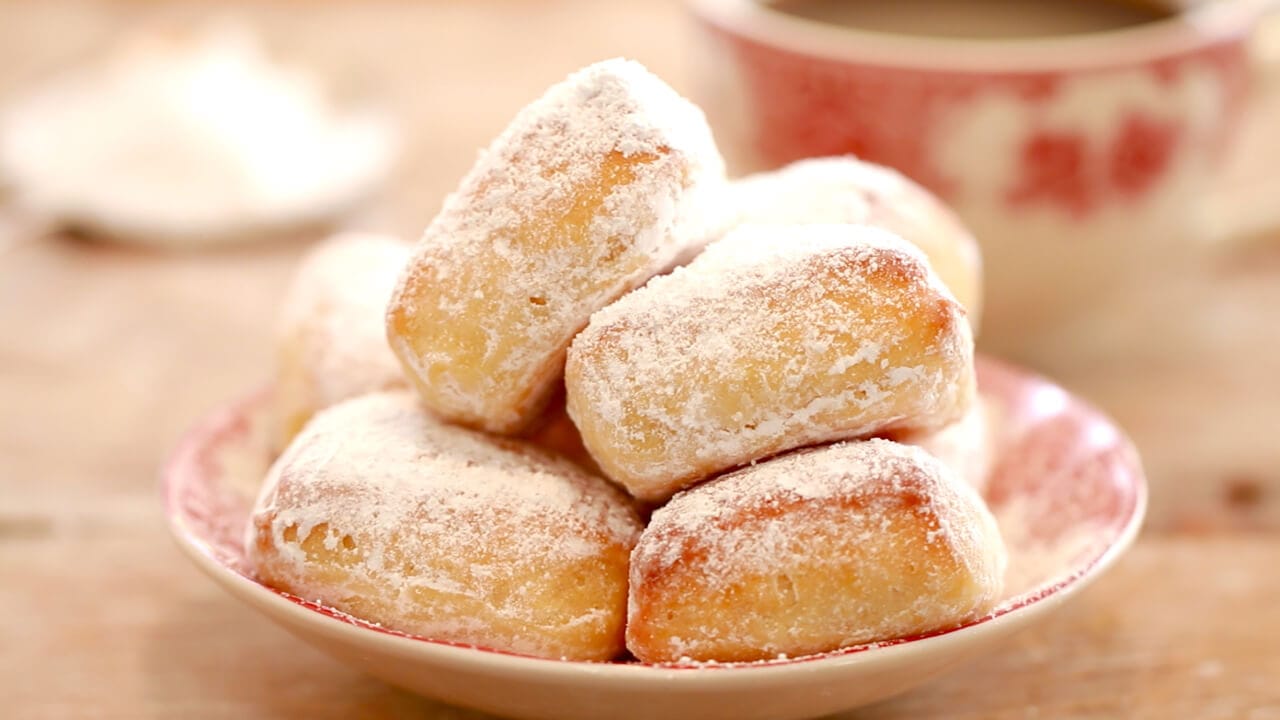
This post may contain affiliate links. Please see my full disclosure for details.
Hi Bold Bakers!
I was reading through the comments on my YouTube channel and one dessert I saw requested time and time again was Beignets. It’s a yeasted doughy treat coated in powdered sugar and fried. However mine have a Big & Bold twist since they are baked, not fried.
Beignets are very popular in Creole cuisine. A lot of us know Beignets because of the the famous Cafe Du Monde restaurant in new Orleans where people flock from all over the world to try the famous sweet dough.
I have not been (yet) to Cafe Du Monde. But I have been to Disneyland where I have enjoyed my fair share of Mickey Mouse-shaped Beignets. They also made an appearance in Disney’s Princess and the Frog where Tiana served them at the diner.
Just because I don’t fry my Beignets, that doesn’t mean they aren’t delicious. However I want to give them a little extra something something before serving so I brush them generously with butter and sift over powdered sugar.
If you like the idea of popular desserts that are baked instead of fried then check out my Baked Churros and Baked Donuts recipes.
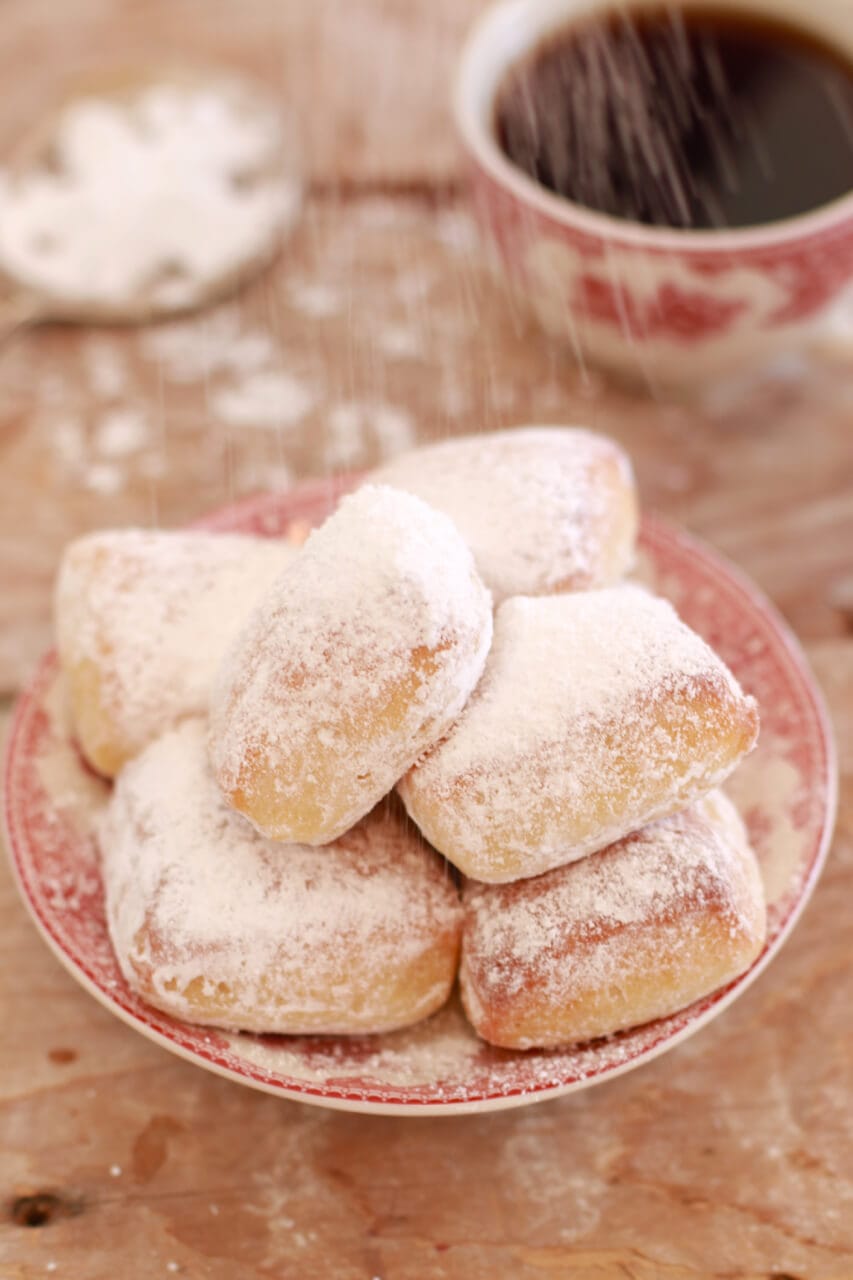
Beignets are a yeasted dough, similar to donuts. You can easily mix the dough by hand, no machine needed.
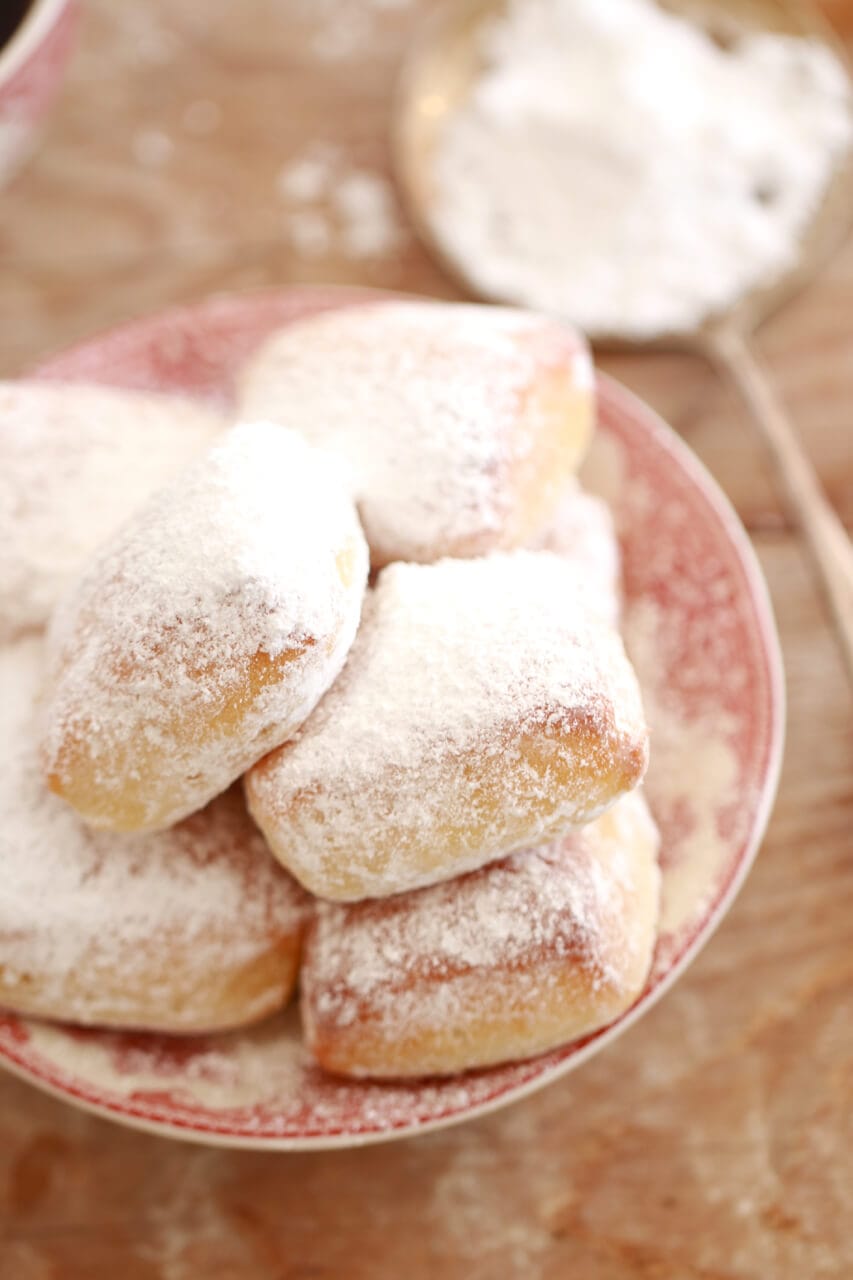
You can make this Beignet dough in advance and store it in the fridge for up to 2 days.
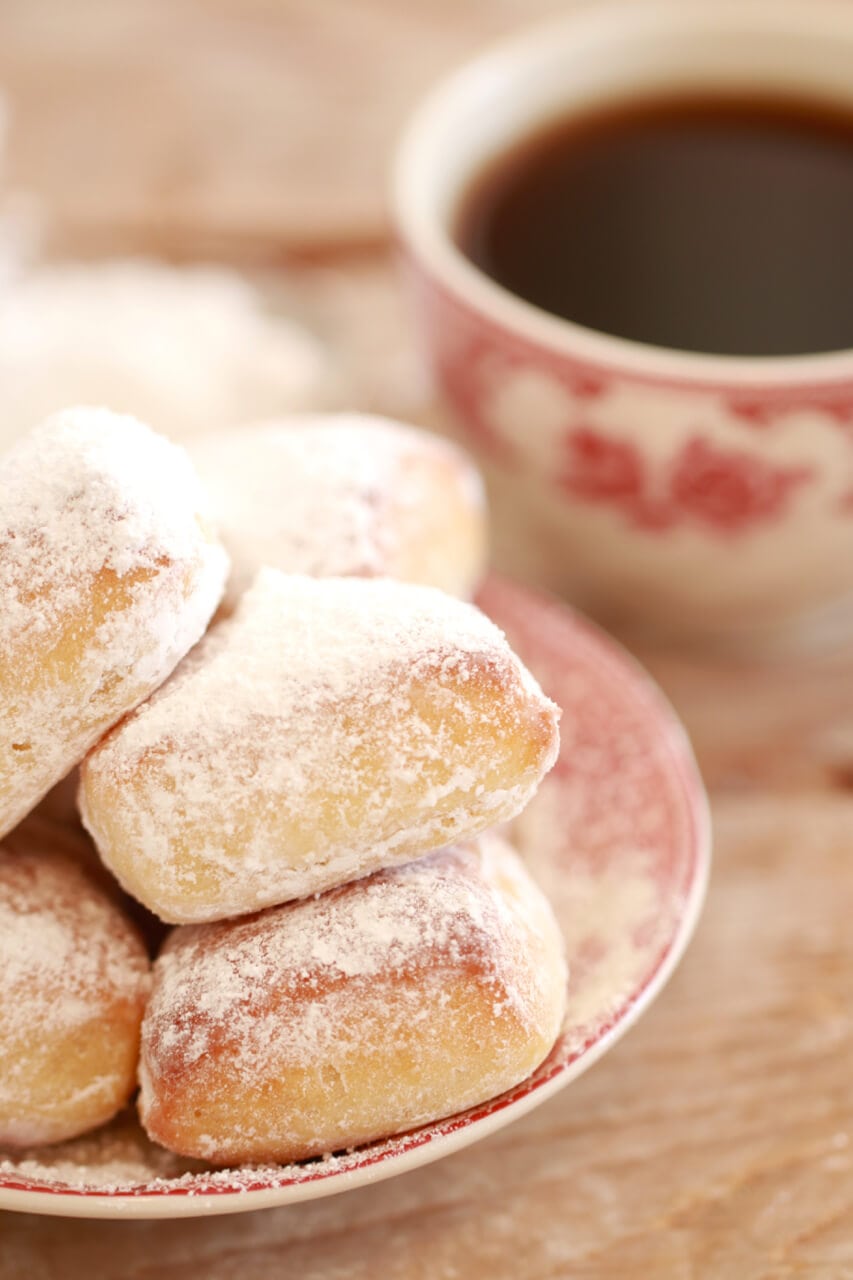
They still have a lot of flavor but without the frying. Serve them fresh out of the oven coated in icing sugar.
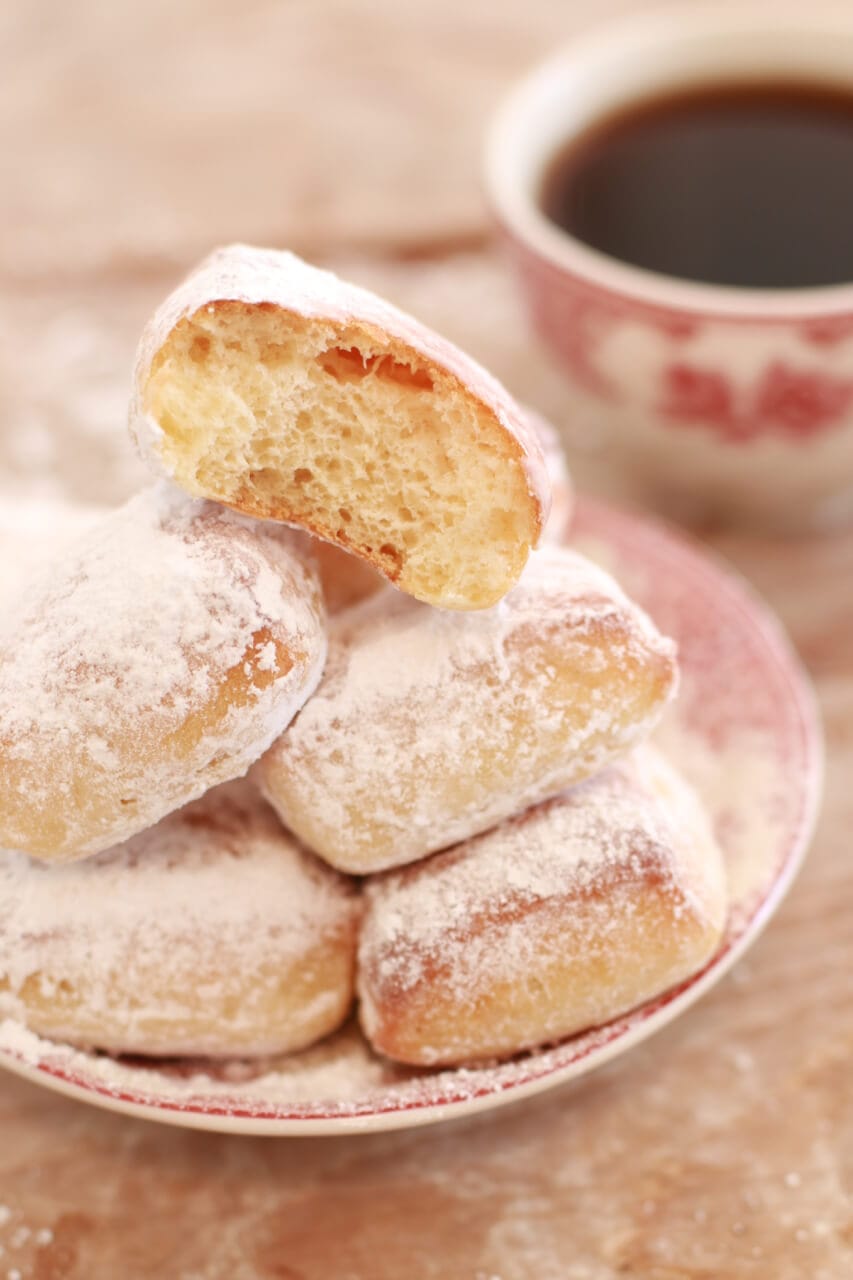
Watch The Recipe Video!
Homemade Beignets (Baked Not Fried)
Ingredients
- ¾ cups (6oz/170g) lukewarm water
- ⅓ cup (2 ½ oz/75g) granulated sugar
- 1 heaped teaspoon active dry yeast
- 1 egg , slightly beaten
- 1 teaspoon salt
- 2 teaspoons vanilla extract
- ½ cup (4oz/115g) evaporated milk*
- 3 ½ cup (18oz/ 525g) bread flour
- 2 tablespoons (1oz/30g) butter, melted
- confectioner's sugar for dusting
- 2 tablespoons (1oz/30g) butter, melted
Instructions
- Mix water, sugar, and yeast in a large bowl and let sit 5-10 minutes.
- In a medium bowl, whisk the eggs, salt, vanilla extract and evaporated milk together.
- Add egg mixture to yeast mixture and mix.
- Stir in the melted butter, followed by the bread flour.
- Using a spatula or your hand bring the dough together into a ball (I like to use my hand so you can feel whats going on). You will notice that this dough will be a little sticky, that's ok.
- Coat a large bowl with oil, place dough in bowl and cover with plastic wrap.
- Let rise at least 2 hours or place in refrigerator overnight.
- Preheat oven to 350oF (180oC).
- Roll dough to ¼-inch thickness and cut 1 1/2 inch squares. (This is easy to do with a pizza cutter.)
- Place the squares on a baking sheet lined with parchment paper 1 inch apart and let the dough proof for about 45 minutes.
- Brush each square lightly with milk and bake for 12-15 minutes, or until golden brown.
- While the beignets are still warm, brush them with butter and generously dust with icing sugar.
Recipe Notes
WW PlusPoints: 9 Evaporated milk: you can replace it with milk and add 2 tablespoons extra of sugar
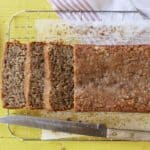
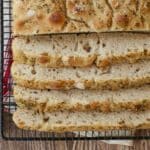
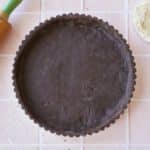

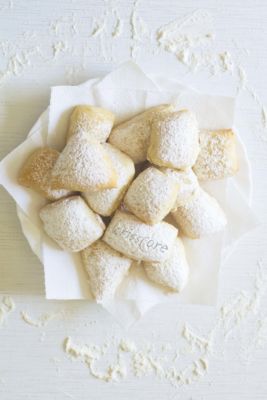

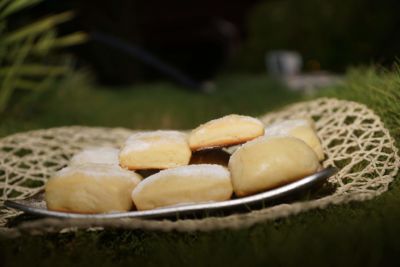
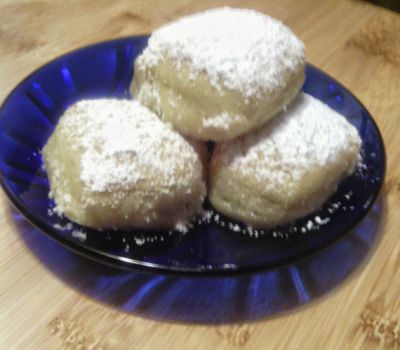
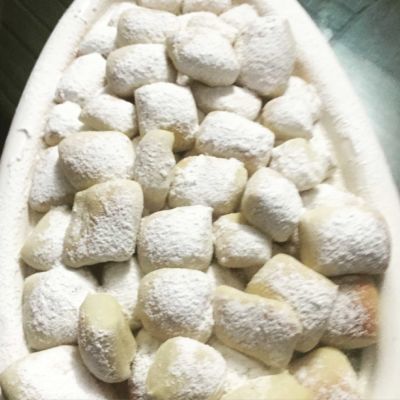
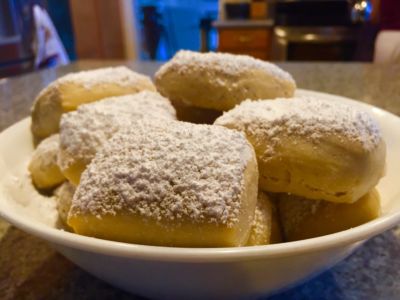


How would I go about adding in cinnamon and almond extract to this recipe? How much should I add? I know that this really depends on my taste but I still would like your opinion.
I attempted to make a half batch of these with all purpose flour but the dough was so sticky that I pretty much had to use the full amount of flour. An hour into the rise, almost nothing had happened so I mixed in more yeast and did another 2hrs of rising. I was worried that the proportions would be too far off but they still turned out delicious! Just wanted to share my experience with AP flour; you may need to make drastic adjustments to get the dough to the correct consistency but it all worked out!
Hi Gemma, thank you so much for this recipe. Worked with yeast for the first time today and enjoyed it thoroughly. Came out perfectly well. Joy in these times of lockdown.
As a college student, I’m always looking for simple and fun recipes to try. This turned out to be a really fun experience! The dough was a bit sticky but I used a spatula and added a tiny bit of extra flour to make my life easier! This recipe was awesome! However, I did have to adjust some things. My first batch was baked in the center of my oven (conventional oven) at 350 degrees Fahrenheit; after 15 minutes of baking, the beignets had a dark browning on the bottom and pale on top. So I decided to bake the… Read more »
Can instant yeast be used in equal parts in place of the active dry yeast?
how many does it make?
The taste is perfect and the texture exactly like I remember from when I tried them in Paris.
But making this dough was honestly quite the struggle. I dont know why, but when I followed the recipe exactly as shown it didn’t work at all – the dough just stayed far too sticky to work with until I added a substantial amount of flour and kneaded it with my kitchenaid for 5-10 minutes. And even still it didn’t really get any easier to work with.
So the taste was perfect, but I dont think I’ll make these beignets again. 😉
Hey Gemma.. thank you for the great recipe!! It turned out absolutely amazing and delicious!!! Is there a substitute you would recommend for the egg? Having egg shortage during quarantine🤷🏻♀️
Made these and they are not beignets, thoroughly disappointed. These are dense bread rolls, using bread flour was not a good idea for beignets and will use another recipe that uses just AP flour.
Hi, can I swap bread flour with AP flour in case I don’t have any bread flour on hand at the moment? What else do I need to alter in the recipe if I swap to AP flour? Thanks